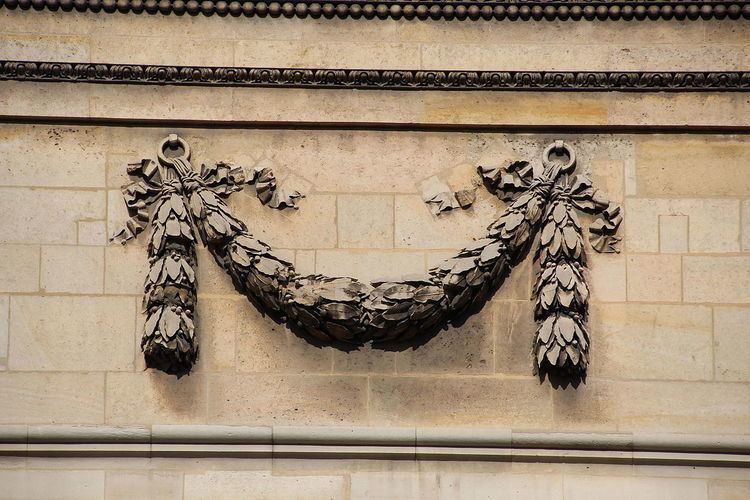 | ||
A festoon (from French feston, Italian festone, from a Late Latin festo, originally a festal garland, Latin festum, feast) is a wreath or garland, and in architecture typically a carved ornament depicting conventional arrangement of flowers, foliage or fruit bound together and suspended by ribbons. The motif is sometimes known as a swag when depicting fabric or linen.
Contents
Origins and design
Its origin is probably due to the representation in stone of the garlands of natural flowers, etc., which were hung up over an entrance doorway on fête days, or suspended around an altar.
The design was largely employed both by the Ancient Greeks and Romans and formed the principal decoration of altars, friezes and panels. The ends of the ribbons are sometimes formed into bows or twisted curves; when in addition a group of foliage or flowers is suspended, it is called a drop or margent.
The motif was later used in neo-classical architecture and decorative arts, especially ceramics and the work of silversmiths. Variations on the exact design are plentiful; for example, the ribbons can be suspended either from a decorated knot, or held in the mouths of lions, or suspended across the tops of bucrania as in the Temple of Vesta at Tivoli.
Other uses
In modern usage, the term can refer to a specific style of electric light bulb with two points of contact on either end providing power to the filament or diode.
